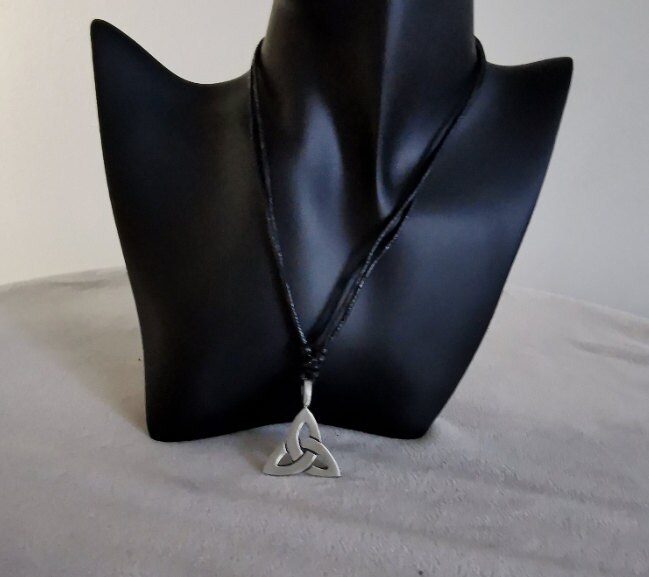The word triquetra comes from Latin and means "three-cornered" or "triangular." The design itself, consisting of three interconnected loops, is believed to have first appeared in ancient Celtic and Norse art, though some sources trace its origins even further back to early Indo-European civilizations. The symbol has been found carved on stones, metalwork, manuscripts, and other historical artifacts dating back as far as 500 BCE.One of the most well-known early uses of the triquetra is in Celtic culture, where it was often incorporated into artwork, jewelry, and religious objects. The Celts, known for their rich mythology and spiritual beliefs, used intricate knotwork and geometric patterns to convey messages about nature, the divine, and the interconnectedness of life. The triquetra was no exception—it was commonly associated with themes of unity, eternity, and the cycle of life.
Over time, the triquetra took on multiple meanings in different religious and spiritual contexts. In Celtic paganism, the symbol was often linked to the triple goddess, representing the three stages of a woman's life: maiden, mother, and crone. This idea reinforced the Celts’ deep reverence for nature and the divine feminine.With the spread of Christianity across Europe, the triquetra was adopted by Christian artists and theologians, who saw it as a representation of the Holy Trinity—the Father, the Son, and the Holy Spirit. Many medieval Christian texts and stained glass windows feature the triquetra as a symbol of divine unity and the eternal nature of God. In some cases, a circle was added around the loops to emphasize the concept of eternity and infinity.In Norse and Viking traditions, the triquetra also appears frequently, often associated with Odin, the chief god in Norse mythology. Some believe that the symbol was used to represent Yggdrasil, the world tree, which connected the nine realms of Norse cosmology. This reinforces the theme of interconnectedness and balance that the triquetra embodies.
The Triquetra in Modern Culture
Even in contemporary times, the triquetra continues to be a powerful and recognizable symbol. It frequently appears in pop culture, including television shows, movies, and books. For instance, the popular television series Charmed used the triquetra as a representation of the three sisters’ magical bond, as well as their connection to the power of three.Beyond entertainment, the triquetra is widely used in tattoos, jewelry, and modern spiritual practices. Many people today wear or display the symbol as a personal emblem of protection, unity, or a reminder of their spiritual beliefs. In Wicca and other neopagan traditions, the triquetra is often associated with the elements—earth, water, and air—or with the three phases of the moon, reinforcing its connection to cycles and balance.
What makes the triquetra so intriguing is its ability to carry multiple meanings while maintaining a core essence of interconnectedness. For some, it represents the past, present, and future, emphasizing the idea that time is an eternal cycle. For others, it signifies mind, body, and soul, reflecting the holistic nature of existence.Another interpretation ties the symbol to love, honor, and protection, making it a popular choice for gifts between loved ones. The three-part structure of the triquetra inherently lends itself to ideas of unity and harmony, making it a meaningful emblem for relationships, family, and friendships.
From a design perspective, the triquetra is admired for its elegant symmetry and endless loop, which gives it an almost hypnotic quality. The interwoven nature of its lines suggests continuity and infinity, reinforcing its philosophical and spiritual connotations. The number three has always held special significance in mathematics, religion, and philosophy, adding another layer of depth to the symbol.Artists and designers often incorporate the triquetra into tattoos, logos, and decorative motifs, drawn to its balanced and flowing structure. The simplicity of the symbol allows it to be easily modified or combined with other elements, such as circles, runes, or additional knotwork, making it a versatile and enduring design choice.


